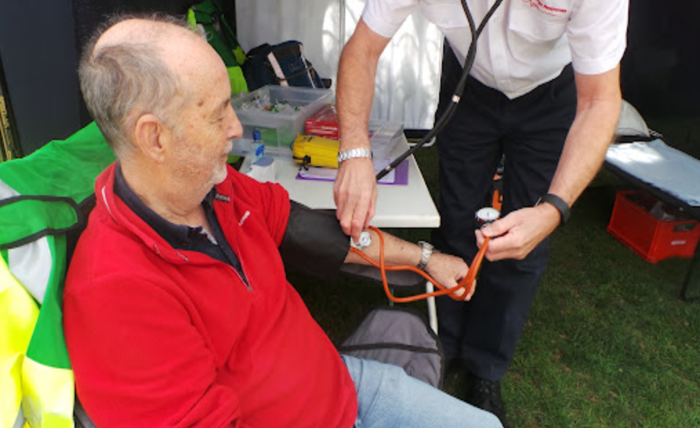When emergencies strike, every second counts. Whether it’s a house fire, a health crisis, or a major storm, fast response services are essential in safeguarding lives, property, and peace of mind. These services serve as the backbone of any thriving community, ensuring swift action, safety, and support when people need it the most.
This blog will take a closer look at the importance of fast response services for local communities, explore the factors that make them effective, and provide real-life examples of how such services directly impact lives.
Why Fast Response Services Are Crucial
Fast response services refer to professionals and systems put in place to tackle emergencies within minutes. This includes firefighters, paramedics, law enforcement, utility recovery teams, and even non-governmental aid services like volunteer and disaster-relief teams. Here’s why these services matter so much to the fabric of any local community:
Quick Action Saves Lives
Emergencies like fires, heart attacks, or gas leaks escalate rapidly. First responders are trained to minimize harm by acting swiftly, and their prompt intervention can mean the difference between life and death. Consider a house fire as an example. Speed matters when containing the flames or evacuating individuals. Something as simple as a fire extinguisher cover protects this critical tool from damage, ensuring it’s ready for action when seconds are ticking away.
Safeguarding Public Health
Medical fast response services ensure public health crises, such as disease outbreaks or accidents, are managed quickly and effectively. For example, many cities have implemented mobile clinics and rapid testing units to address health issues before they grow out of control, especially during situations like pandemics. Their presence fosters a sense of trust within the community.
Protecting Property and Infrastructure
Beyond saving lives, fast response plays a critical role in protecting property and infrastructure. Fires, floods, or severe weather events can cause irreparable damage if not addressed immediately. Proactive services, such as utility crews dealing with downed powerlines, protect homes and businesses while restoring normalcy.
Essential Factors Behind Effective Services
Ensuring effective fast response services takes more than assembling teams of first responders. Here are the key elements that contribute to their success.
Advanced Technology Enhances Speed and Accuracy
Modern technology, such as geolocation systems and AI-driven dispatch systems, enhances service speed and accuracy. For instance, fire departments now use heat-detection drones to assess building fires before deploying their teams for maximum efficiency.
Comprehensive Training for First Responders
Responders undergo rigorous, scenario-based training to prepare for unpredictable situations. Their expertise enables them to act decisively under pressure. This preparedness also includes understanding the specific needs of the communities they serve—for example, knowing the layout of local neighborhoods or critical vulnerabilities in older infrastructures.
Cross-Agency Coordination
Emergency response is most successful when agencies collaborate. Joint efforts between hospitals, fire stations, law enforcement, and disaster-relief agencies ensure resources are pooled effectively and crises are resolved as efficiently as possible.
Community Stories Showing Real Impact
There are countless inspiring examples of how fast response services have significantly shaped local communities. These stories help highlight their undeniable value.
Emergency Response and Wildfires
One recent example is the swift action taken during the wildfires that swept through parts of California. Teams deployed within minutes managed to guide thousands of residents to safety, rescue wildlife, and control the destruction of property. Supplies like fire extinguisher covers proved vital, as protected equipment remained functional throughout the battle. Homeowners can further enhance protection through an ember resistant vents retrofit to prevent ember intrusion during such events.
![]()
Medical Response During Community Disasters
When Hurricane Ida struck, mobile medical teams stationed strategically across the region treated hundreds of minor to severe cases within hours. Their quick mobilization reduced overcrowding in local hospitals and provided essential care to underserved areas.
Volunteer-led Efforts in Flood Zones
Community volunteers, often overlooked as first responders, have played a large part in providing food, shelter, and emotional support in flood-stricken regions. Coordinated with professional responders, their contributions demonstrate the power of combined community action.
Supporting Fast Response Systems in Your Area
Empowering fast response services is not solely the responsibility of government authorities. Communities and individuals can also play their part in ensuring these critical services thrive.
Invest in Resources
Essential tools like defibrillators, proper fire-proof storage solutions, and well-maintained vehicles can make all the difference. Advocating for funding and contributing to community resource initiatives helps fill gaps in service.
Strengthen Awareness and Preparedness
Public education campaigns that teach CPR, fire drills, and basic first aid ensure that residents are ready to support professional responders in case of emergencies. Communities with informed and equipped citizens tend to fare better in crises.
Volunteer or Donate
Supporting first responders through volunteer efforts or monetary contributions can provide immediate and long-term benefits to your local area. Even simple gestures, such as donating supplies or writing thank-you notes, help build morale among responders.
Building Resilient Communities Together
The services provided by first responders go far beyond emergency intervention. They foster trust, community strength, and security, creating an environment where businesses grow, families thrive, and neighbors feel supported.
By investing in and supporting fast response services, we contribute to more resilient local communities that are prepared to handle whatever challenges come their way. Interested in learning how to implement a simple step, like protecting your emergency tools with something as practical as a fire extinguisher cover? Start evaluating your local resources, then take action to make a difference today.







